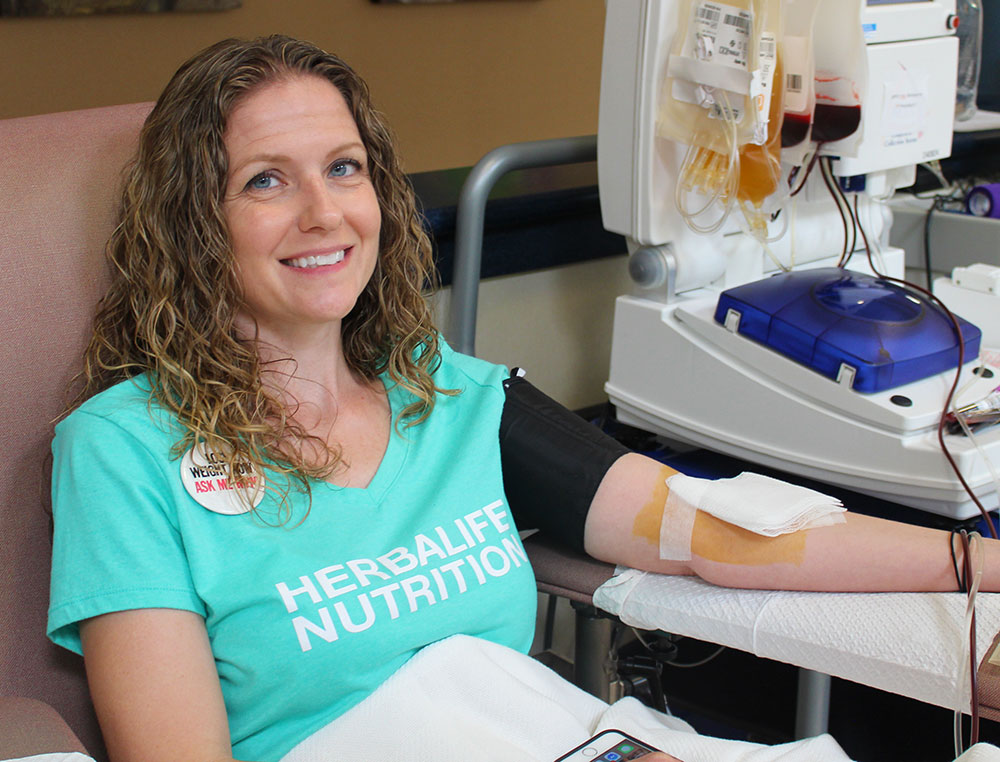Amy Degnars needed a blood transfusion to help her overcome bacterial meningitis shortly after she was born.

Years later, that early battle in her life was on her mind when Amy came in to donate blood for the first time on December 16, 2014.
“Needing that blood, I just feel like giving back to the community and saving a life,” Amy said. “Somebody did it for me, and I finally had the courage to donate myself.”
All told, she has given blood a dozen times. She most recently donated on June 27, 2019 after requesting an appointment through Blood Bank of Delmarva’s (“BBD”) Facebook page. When she came in she remembered an email she had received from BBD asking AB negative donors like Amy to consider giving plasma instead of whole blood.
“I just happened to actually read it and understand what it was saying, how my blood type was special and needed. So, I asked about giving plasma.”
Plasma is the light yellow liquid portion of the blood that carries blood cells – such as red blood cells and platelets – throughout the body. Plasma is taken through a special donation called apheresis (from Greek, meaning “to take away”), in which the donor’s blood is separated, a portion of the donor’s plasma is retained, and the red blood cells and saline are returned to the donor. While plasma can also be derived from a whole blood donation, it only yields one patient dose of plasma, whereas a plasmapheresis donation yields three or four doses. A plasma donation does take slightly longer than a blood donation – about a half hour longer – but how often can you say that you saved two or three MORE lives in 30 minutes?
Donor Services was thrilled that Amy was willing to try giving plasma because there is a much greater need for type AB plasma than AB red blood cells. While type AB negative blood is the rarest type – only about 1% of the population have it – only AB positive or AB negative patients (about 4% of the population) can be given AB blood. This means that BBD often has an abundance of AB red blood cells – well beyond the seven-day maximum. The opposite is true of AB plasma, however. A patient of any blood type can receive AB plasma, making type AB donors “universal” plasma donors, in the same way that O negative donors are universal donors for red blood cells.
Plasma donors can donate twice as often as whole blood donors – every 28 days compared to 56 days. And, that’s a fortunate thing because there are many patients who need plasma transfusions, such as patients with cancer, including leukemia. Other patients treated with plasma are those with liver disease, patients undergoing bone marrow transplant, and severe burn patients.
